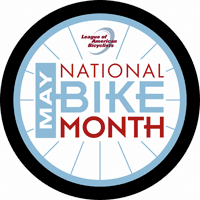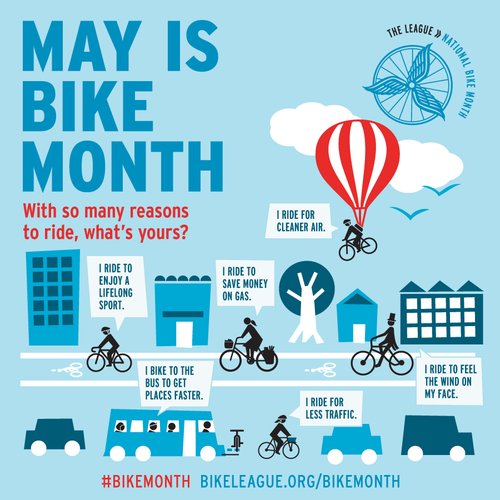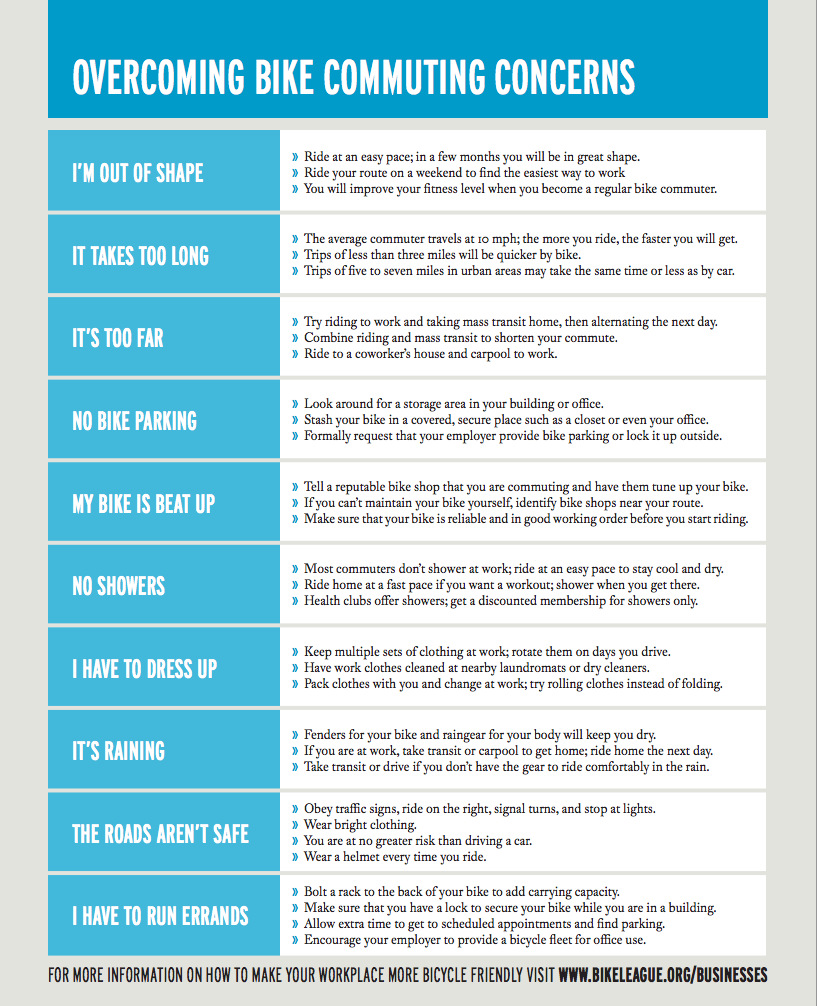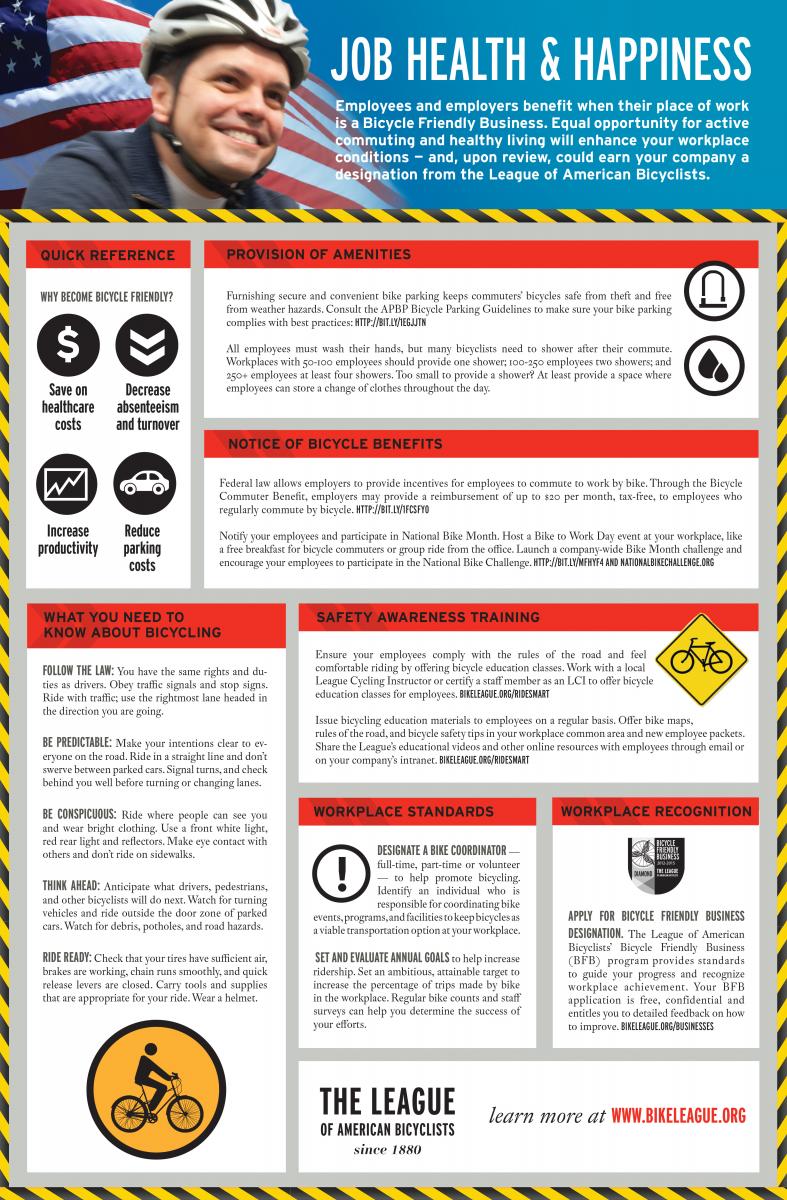
 The League of American Bicyclists is the national sponsor of Bike Month, Bike to Work Week and Bike to Work Day. These important events promote bicycling and commuting by bike, which are great activities as good for your health and our community as they are exciting and fun.
The League of American Bicyclists is the national sponsor of Bike Month, Bike to Work Week and Bike to Work Day. These important events promote bicycling and commuting by bike, which are great activities as good for your health and our community as they are exciting and fun.
 We take part in these cycling festivities and appreciate how getting more people on bikes improves our community with less congestion, noise and pollution. We also appreciate how Bike Month helps awareness of cycling and cyclists and improves everyone's safety. Please join us in enthusiastically supporting the following safety goals of National Bike Month!
We take part in these cycling festivities and appreciate how getting more people on bikes improves our community with less congestion, noise and pollution. We also appreciate how Bike Month helps awareness of cycling and cyclists and improves everyone's safety. Please join us in enthusiastically supporting the following safety goals of National Bike Month!
Bike Month's five basic goals and national strategies for advancing bicycle safety include:
1 Motorists will share the road.
2 Bicyclists will ride safely.
3 Bicyclists will wear helmets.
4 The legal system will support safe bicycling.
5 Roads and paths will safely accommodate bicycling.
Make sure you and your family are aware of the following rules and guidelines before you head out onto the streets. And if you have any questions such as how to properly fit a bicycle helmet, how to lock up your bike securely or what bike paths are fun to venture out on, please stop by the shop–we're here to help!
| 1. Follow the rules of the road |
• Obey the same road laws as motorists. |
| 2. Be visible | • Ride where drivers can see you. • Wear brightly colored clothing. • At night, use a white front and red rear light and reflectors and reflective clothing. |
| 3. Be predictable | • Ride in a straight line and don’t swerve between parked cars. • Make eye contact with motorists to let them know you are there. • Do not ride on the sidewalk unless it's legal to do so. |
| 4. Anticipate conflicts | • Be aware of traffic around you and be prepared to take evasive action. • Learn and practice braking and turning techniques to avoid crashes. • Be extra alert at intersections. |
| 5. Wear a helmet | • Ensure that your helmet is fitted to stay on top of your head, not tipped back/forward. • After a crash or any impact that damages your helmet, visible or not, replace it immediately. |
OVERCOMING COMMUTING CONCERNS

HOW TO MAKE YOUR WORKPLACE MORE BICYCLE FRIENDLY?

